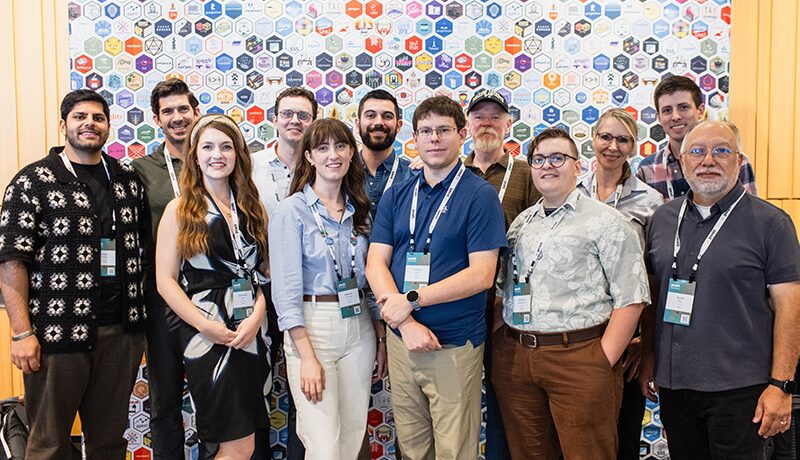Posit Team
Preparing for future missions to the Moon & Mars with dynamic workforce scenario planning

Company
NASA is an independent agency of the U.S. federal government responsible for the civil space program, aeronautics research, and space research.

Size:
18,000 Civil Servants
Industry:
Public Sector
Technology used:
Posit Team (Posit Workbench, Posit Connect, Posit Package Manager), Dash, Shiny, Quarto, Vetiver
Apps/products/solutions delivered:
Demand scenario forecaster, visualizations, models, Tableau integrations, and many more
Workforce planning across 18,000 civil servants and 193 active + future missions
With a workforce of 18,000 civil servants and unique competencies from electrical engineering to propulsion capabilities, workforce planning for missions is a very labor intensive process. There are currently 193 different active and future missions that NASA’s workforce planners need to prepare for over the next 10 years. NASA also has to consider the factors that will impact the workforce plan, such as retirement rates, economic instability, elections, etc.
NASA’s People Analytics team sought to enhance their infrastructure and architecture, aiming to move from descriptive analytics with static dashboards to answer questions like “How many civil servants work at NASA today?” to more advanced predictive and prescriptive analytics and interactive applications to answer “What impact will there be on the workforce if we delay this mission 1 year?”
To make use of these predictive insights to reduce risk and prepare for the future, workforce planners and supervisors within individual NASA Programs needed a way to slice and dice information themselves.
In the past - without a way to securely deploy their work - the people analytics team needed to physically attend meetings and bring the visualizations built in Python and R from meeting room to meeting room to screen share so that stakeholders could do what-if analyses. They needed a collaborative environment to support development and deployment of these predictive insights.
David Meza is the Head of Analytics for Human Capital and Branch Chief for People Analytics at NASA
He is tasked with defining and developing agency-wide strategy for data science/analytics solutions that can have significant positive impacts on NASA mission support and the Office of the Chief Human Capital Officer.
Real-time exploration of “what if” for answers in minutes, not weeks
Speed of iteration and response is crucial to NASA’s people analytics team as they frequently receive requests from Congress and high level stakeholders that require immediate attention. With Posit Team, they can leave a meeting in the morning and start working on a prototype to share for feedback even later in the day.
"It's really been a game changer for how we're able to not only share our visualizations, but actually have data driven decisions made quickly based on that information that we’re no longer having to wait weeks for data. We're getting a lot faster."
To highlight a real world use case, the demand scenario forecaster empowers workforce planners and supervisors in preparing workforce plans for the full-time equivalent (FTE) required for missions given various factors. With a Dash app hosted on Posit Connect, they can do real-time data exploration to create different scenarios and see the specific skill sets needed over the next 10 years for specific projects.
While the example below highlights Dash, NASA's People Analytics team can deploy a wide range of data products to Posit Connect, including Flask, Streamlit, Shiny, Quarto, R Markdown, FastAPI, Jupyter, and 7+ others.

With this tool, business stakeholders can do their own what-if analysis asynchronously - without the data team in the room. Workforce planners can use this app to simulate and visualize the predicted impact of delays, skill set increases, and funding changes on full-time equivalent (FTE) requirements.
Bridging the gap between technologies and teams with Posit
To advance their analytical maturity, David Meza had a vision for taking data from its authoritative source and turning it into actionable knowledge. Within Human Capital, he wanted to ensure they could:
Get the data they need
Integrate that through IT
Analyze it
Present to individuals across the organization
Empower business leaders to do some of their own analysis and scenario planning
NASA’s use of Posit has since contributed to many improvements in areas such as performance management, organizational effectiveness, and workforce planning.
While NASA’s people analytics team has also used business intelligence tools to create visually appealing dashboards, these couldn’t provide the necessary level of interactivity with models and data manipulation capabilities that the Posit platform offers.
It was important that Posit not only fit into their broader ecosystem and architecture, but that they could collaborate with other technologies across the organization. As an example, NASA has been able to bridge the gap for analysts using Tableau with the plumbertableau package. This enables seamless integration, allowing data analysts to incorporate advanced model outputs generated within the Posit environment directly into their Tableau dashboards.
Business stakeholders have been impressed by the ability to now get the data needed for complex decisions within minutes or seconds rather than weeks, allowing “what if” scenarios to happen in real-time.